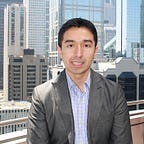Why is a Van Gogh Painting Worth Millions While a Replica is Worthless?
An Exploration of Assets and the Qualities that Make them Valuable
Predating even the most ancient civilizations, the act of directly trading goods or services has long been a cornerstone of societies globally (and is still the predominant means of exchange in certain regions today).
From weapons and armor to cattle and spices, to internet forums facilitating trades between individuals, the barter system’s millenia of success cannot possibly be understated. However, there are certain limitations — notably, the age-old problem of divisibility and liquidity: Bob has a rare piece of art, and wishes to obtain a new pair of shoes from Alice. The art can’t be divided into pieces, and it’s unlikely that Bob would want a mountain of shoes (assuming Alice could provide them in the first place). This example works on the assumption that Alice even has any interest in the piece of art — it’s entirely possible that Bob would be unable to find a buyer in his proximity.
It’s therefore in the interests of individuals to hold easily divisible, transportable and scare assets (in line with the Aristotelian desirable properties of money), so that goods and services can be easily paid for. It’s perhaps for this reason that we’ve seen the proliferation of grain and salt as currency in earlier centuries. These notions are heavily inline with the concepts put forth by commentators from the Austrian school of economics (Hayek, Mises, et al.), who firmly believe that value should derive from the market and not stem from government decree.
At the opposite end of the spectrum are those who believe that central banks and government fiat lies at the center of the economy, and that government spending is key to boosting the economy (often relying on GDP as a measure of prosperity). So-called Keynesian proponents (named after noted economist John Maynard Keynes) delegate their trust to the government and its monetary policy, opposing the notion that scarcity drives value.
If decades of heated academic debate on the matter have taught us anything, it’s that there’s probably a middle ground, with both perspectives containing desirable elements. Evidently, there’s merit in both a money whose value stems from the market’s demand (such as wampum, shells or gold) and a centrally-issued money that exists solely to facilitate trade (dollars or euros), backed by a large centralized overseer.
There’s a lot of comparisons that can be drawn between the Austrian school concepts and the emerging security token domain — although not an altogether novel idea (after all, the tokenization of securities is merely a cyber-spatial realization of existing rights), the tethering of physical assets to blockchain tokens could turbocharge the liquidity of traditionally illiquid assets, providing transparent and clear records of ownership and opening up otherwise geographically-limited markets to the rest of the world. Moreover, there’s a certain degree of stability that can be expected from security tokens (versus tokens backed by nothing), which stems from the market value of the underlying asset.
Fundamentally, value can be perceived as two things — fiat, whose value is outlined by a government (or equivalent), and alternative assets, whose value is determined by the free market. In the interest of hedging, it’s wise to recognise the value in both, and to diversify one’s portfolio accordingly. For our part, the OpenFinance team aims to educate and provide individuals with the tools to do both so as to ensure their financial sovereignty.
As always, be sure to keep up with our developments on social media:
Website: openfinance.io
Telegram: t.me/openfinancenetwork
Twitter: twitter.com/OpenFinanceIO
LinkedIn: linkedin.com/company/openfinance-network
Medium: medium.com/openfinance
###
Juan M. Hernandez is the Founder and CEO of OpenFinance Network, the trading platform for security tokens and other alternative assets. Juan is a serial entrepreneur, technologist, and polymath experienced in financial markets, exchanges, and blockchain technology. He holds a CS degree from Northwestern University and an MBA from the Kellogg Graduate School of Management.
If you enjoyed this post, please “clap” 50X in the bottom left corner so it will be shared with more people.
